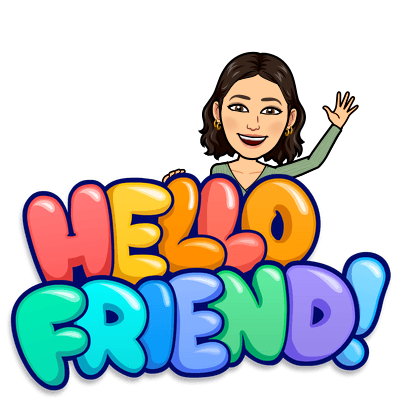 |
| Created with Bitmoji |
When I first thought about digital citizenship, I had thought it was the same thing as a digital persona; however, citizenship has much more to do with respecting others when using technology. This means that the rights we have as citizens outside of the digital world are equally as applicable in digital spaces. If we were to see someone bullying another online, we must act accordingly (report it to the police). The repercussions of what we do or say online are important to understand and be reminded of. The 9 Elements of Digital Citizenship is a mind map that Olivia C. created to break down what digital citizenship consists of. The 9 elements are digital: law; commerce; security; literacy; etiquette; access; rights and responsibilities; and health and wellness. Being careful, respectful, and following regulations summarize these points. Bullying and hacking are two major areas of concern related to digital citizenship. Given that technology is used for much more socializing and financial interactions in this day and age, we must be sure that we prioritize the safety of ourselves and others. People have been switching to online banking and making online purchases which provide the opportunity for theft to occur via hacking or tricking/conning. We must be careful and analyze the validity of the websites we use before we share any personal information. And seeing as cyberbullying is a term that has recently been added to dictionaries, it should be recognized that the texts, messages, and videos that are shared online can deeply affect the emotional and psychological state of the one who recieves it.
These are all important aspects of digital learning that I believe is important to be passed on to future students. Given that they are growing up in an age of high digital technological advancement, they must have a good understanding of their online identities. This incorporates the way we portray ourselves online and our behaviour regarding the responsibility involved with using digital platforms.
Throughout the past few weeks of this course on critical digital literacy, I have learned and expanded my own critical digital learning in many ways. One creative space that I have been using in order to visually demonstrate my understanding of some of this course's major concepts was Mindomo. It was my first time creating a mind map using this program and I found it a bit difficult to use, but I still think readers will be able to work through my understanding of critical digital media as I have learned in the past few months. I have utilized my critical digital literacy skills to navigate through this program and create my own codes for readers to decipher. I have used colours, arrows, bolding, and lines to help the readers decipher the information. This program helps with creating digital mind maps which assist the user in organizing their ideas. The following is a link to My Critical Digital Literacy Mind Map.
Prior to this course, I had only a bit of knowledge as to what critical digital literacy consists of. Now that this course is coming to a closing, I realize that I have been able to explore the digital world on a deeper level than I once had. I have developed new skills in analyzing and creating digital spaces and tried a number of new creative makes. Some of them have been, Mindomo, Flipgrid, Zoom, Padlet and more that went beyond the course activities. I have taken the opportunity to share my thoughts with my own blog and engage in the comments section of other people's blogs. I hope that in the classroom I will be able to share some of my experiences and digital learning with my students. Many of these programs will assist in creating my lessons or finding methods of incorporating participation. Since many classes now have laptops or other technological devices, I believe it is important to use them to our advantage as educators. Computers and other devices are often used heavily in students home lives and many are comfortable with using them, which means that we can't ignore it in the classroom.
References
C, O. (2011, September 13). The 9 Elements of Digital Citizenship. Retrieved from https://www.mindmeister.com/111741413/the-9-elements-of-digital-citizenship
Mindomo. (n.d.). Retrieved from https://www.mindomo.com/

No comments:
Post a Comment